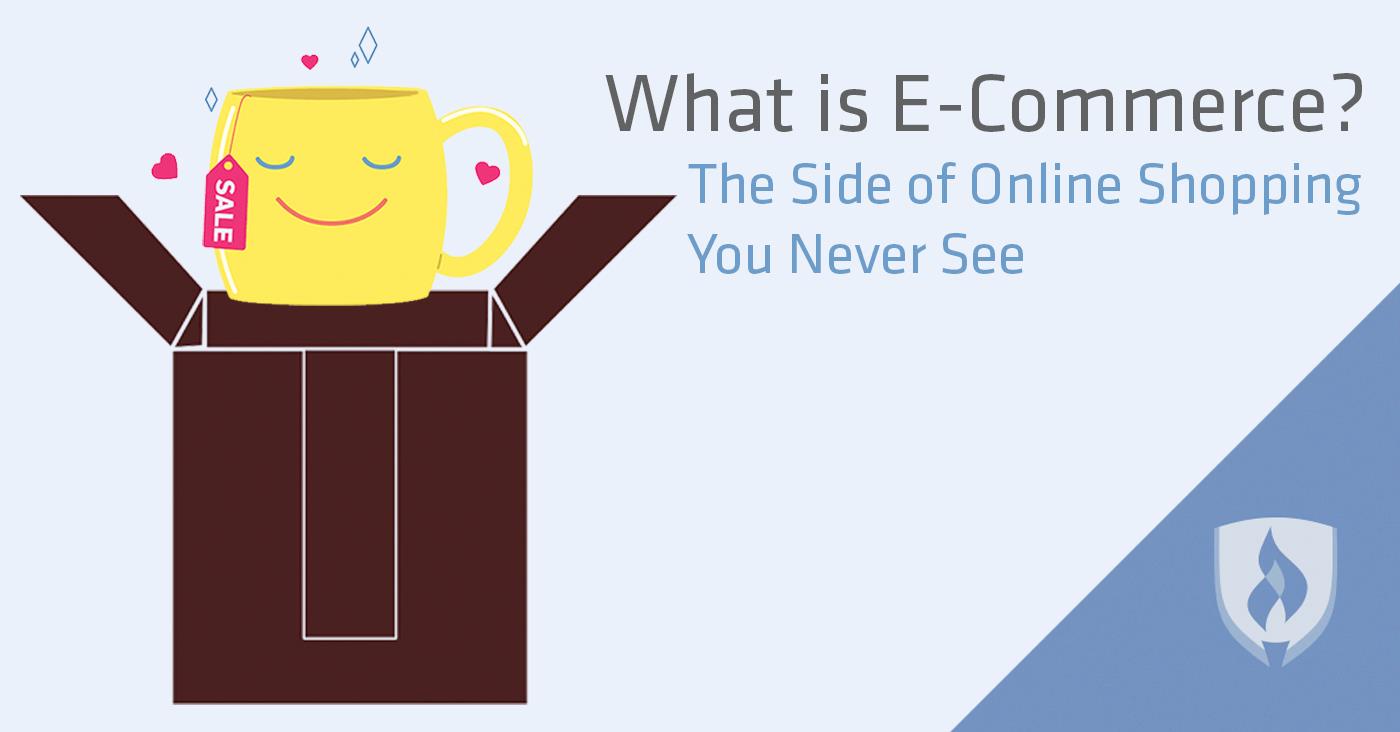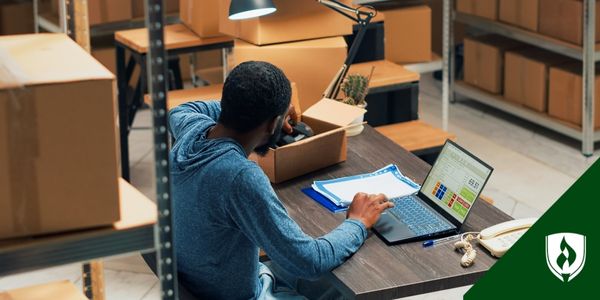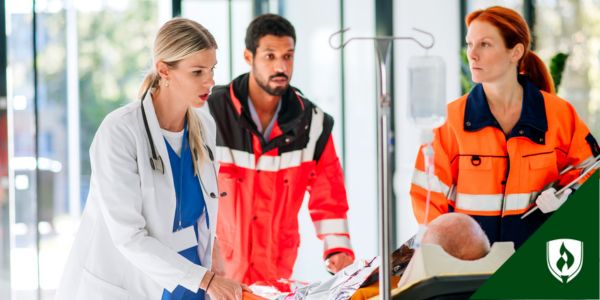
Every day, millions of people across the U.S. make purchases online. In all likelihood, you’ve made one of these purchases recently. In fact, the Pew Research Center found that 79 percent of Americans surveyed have made an online purchase, and of those who do shop online, 43 percent do it at least a few times a month. There’s no question online shopping is a powerful driver of business—2016 e-commerce retail sales topped $322 billion, and that number is not likely to drop any time soon.
All of this business activity leads to thousands of packages arriving on the doorsteps of customers daily. You certainly appreciate the convenience of online shopping, but do you understand what goes on behind the scenes to make it all happen?
There’s a pretty incredible operation running at all hours of the day to get your order picked, packed and shipped on time to your doorstep. Join us as we pull back the curtain and walk you through the magic of online shopping.
How does online shopping delivery work?
Online retailers—from tiny mom-and-pop shops to global behemoths like Amazon—all generally follow the same process for order fulfillment and shipping of products purchased online. This process can be broken down into three categories:
- Picking – the process of finding and verifying the right item to ship in a retailer’s inventory
- Packing – the process of finding the right box, container or packaging to safely and efficiently transport items
- Shipping – the process of actually sending your goods from point A to point B
Every one of these areas is under pressure to ensure orders are quickly fulfilled—and with that comes innovation, investment and a lot of manpower. Let’s take a closer look at each of these order fulfilment focus areas to get a better idea of how they work and the innovations that are helping them keep up with the consumer demand for faster delivery.
Understanding the order-picking process
Understanding the order-picking process: Begins with an ad, saying Get an extra 15% off any mug purchases. Visit Mug Universe today! Then, it switches to a mobile-view of the coupon/ad. This changes to a view of someone’s email inbox. To the right, it says, The Order-Picking Process with new orders on the left-hand side. A new order pops up, with the 15% off code being used. Someone then is seen walking through a warehouse full of coffee mugs. A yellow mug is picked, presumably to be shipped out to fulfill the customer’s order.
One challenging aspect of e-commerce is the order picking process. Alisha Merrill, owner of Bella Ella Boutique, says there are some common misconceptions about how online orders are processed.
“I think people are under the impression that all online orders are immediately received by robots that grab the customer’s order and then perfectly package and ship it, “Merrill says. “That’s just not true.”
She says that while her business is tiny in comparison to giants like Amazon, the fulfilment process is still remarkably similar in that they require significant manpower.
“Everyone in our company at one point or another has been called on to roll up their sleeves and ship,” Merrill says.
Small online retailers like Merrill’s boutique may be able to manage the picking process for orders in-house, but the scale of an order fulfillment operation can become overwhelming as sales grow. Many turn to third-party logistics (3PL) providers to help facilitate the process. The biggest online retailers and logistics providers have built substantial warehouse and distribution center infrastructure to keep goods flowing.
For instance, Walmart has six massive e-commerce fulfillment campus locations—and each of those campuses is over one million square feet. To put that into perspective, a football field is 57,600 square feet, which works out to a little over 17 football fields’ worth of storage and shipping space for each location.
Fulfillment centers aren’t just large—they’re incredibly well organized. These enormous spaces are densely packed with rows of merchandise stacked high. Jake Rheude, director of business development and marketing for Red Stag Fulfillment, says online retailers and logistics providers focus much of their energy on optimizing the picking and packing process as there are fewer areas of opportunity for increased efficiency in shipping.
“Every online retailer has essentially the same access to speed in regards to [shipping],” Rheude says. “Cost is another story—but the point is that anyone can ship FedEx overnight and get a parcel there the next day.”
With such a heavy focus on efficiency, fulfillment warehouses have adopted several different solutions to ensure the people picking orders are doing so as efficiently as possible. Technology plays a large role in helping sort this out—Amazon has gone to great lengths to streamline their picking process with algorithms designed to keep pickers moving, not thinking.
Fundamentally, no matter how large or sophisticated the order fulfillment operation is, the basic process remains the same. Receive the order, pick the items and confirm you have everything before sending it off to be packed.
Understanding the packing process
Understanding the packing process: Someone is seen on an assembly line, holding the mug from the previous video, packing mugs in appropriately sized boxes as they continue down the line.
The second significant stage for online order fulfillment process is packing. Once all of the items in an order have been picked from the shelves, they’re sent along—typically by conveyor belt—to workers who are responsible for packaging the items.
While processes may vary depending on the distribution center, packers will typically do a quick double-check that all items listed in a shipment are present. From there, they are tasked with finding the appropriate box or packing for shipping.
Sounds simple, right? Not so fast. An individual order can have items that vary wildly in weight and dimensions. Add to that the potential for increased shipping costs for inefficiently packed items and you’ll quickly understand how this seemingly simple process can become complicated.
The goal is to safely pack items into as few containers as possible. For sophisticated fulfillment centers, this process isn’t just based on workers giving eyeball measurements and their best guess on how to make it all fit. Instead, they rely on a digital order management system which has a record of the weight and dimensions of all items to be shipped. This information allows the system to tell packers the exact size and number of boxes needed to most efficiently ship these items. Packers will then place all items, packing materials and promotional inserts inside before sealing the package and sending it off to be shipped.
Understanding the shipping process
Understanding the shipping process: You can see an airplane, a ship and a shipping truck, indicating the methods used for getting the customer's order to them. The truck stops outside of someone's house and drops off the package.
The final step in the online retail order fulfillment process is shipping. For many retailers this is a step that is largely outside of their control. The organizations most retailers rely on—the U.S. Postal Service, FedEx and UPS—all have a well-established infrastructure for shipping packages. This includes vast fleets of trucks and cargo aircraft, as well as thousands of the familiar individual delivery vehicles seen daily.
While much of shipping step is out of the hands of online retailers, there’s still plenty of innovative work being done to refine the process. UPS has invested heavily in driver-routing technology, called ORION, which uses computing power to calculate the most efficient route for drivers to take.
An optimized route may seem insignificant, but UPS estimates this technology saves their drivers 100 million travel miles each year. Additionally, FedEx has made investments in technology that quickly scans and sorts thousands of packages per hour to reduce human error and maximize truck loading efficiency.
These advances are just one front in the push to streamline the shipping process. Logistics providers have also been looking for ways to innovate what’s called the “last mile” portion of the process—essentially the final stretch before an item reaches its new owner. Shipping delivery drones have caught a lot of the headlines, but aren’t quite ready for mass implementation. UberRUSH, Amazon Flex and others have introduced the app-based gig economy approach as an option for parcel delivery.
Additionally, online retailers with traditional storefronts increasingly offer online customers the ability to shop online and pick-up at store locations. There’s certainly no lack of options for getting items ordered online to their owners.
What more is there to know?
In order to understand what e-commerce is, you need to first understand what all goes into the online order fulfillment process. Most people take for granted the convenience of receiving an item on your doorstep without ever leaving the house. But the truth is that there are thousands working without much fanfare every day and night to make it happen.
A successful online retailer relies on more than logistics pros. If you’d like to learn more about the other people, tactics and systems that keep online business booming, check out our companion article: “What Is E-commerce? A Peek at The People and Technology That Make It Happen.”
RELATED ARTICLES:




